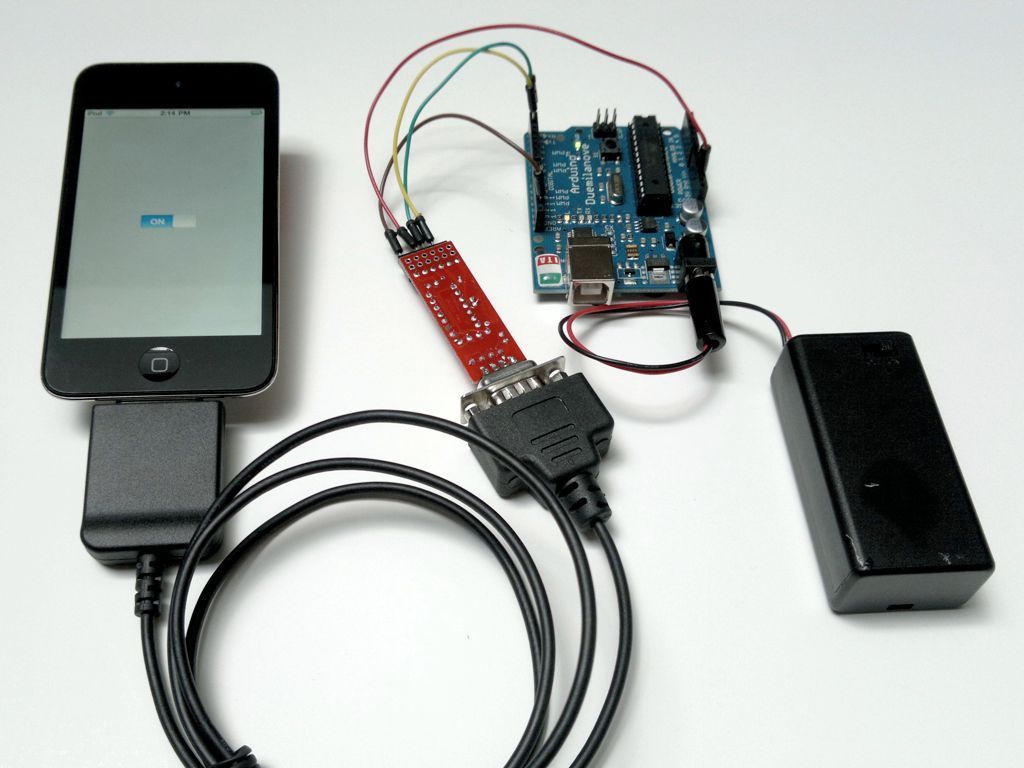The Redpark Serial Cable, which is part of the Redpark Breakout Pack for Arduino and iOS available from the Maker Shed, lets you connect the iPhone to Arduino without jail breaking. This guide shows you one of the simplest examples: connecting an iOS device to an Arduino and turning an LED on and off from an iOS app.
(This guide written with lots of help from Alasdair Allan), the author of a book on this very topic, iOS Sensor Apps with Arduino.


